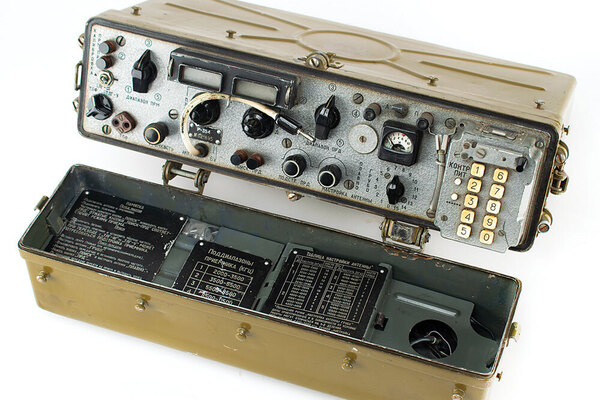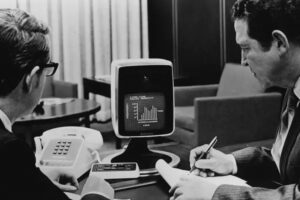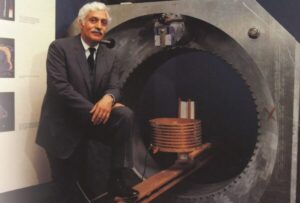In the midst of the intense Cold War between the Soviet Union and the Western powers, espionage played a pivotal role in gathering crucial information and gaining an upper hand. One of the lesser-known Soviet radio-spying technologies, the Fasotron, deserves recognition for its significant contribution to the intelligence activities of the Soviet Union.
During this period, the Soviet Union actively engaged in geopolitical tensions, striving to stay on par with its Western adversaries. Radio-spying technology emerged as a cornerstone in the covert operations, enabling the interception and analysis of vital radio-frequency communications. While the popular technologies of bugs and wiretapping were well-known, the Fasotron technology remained shrouded in obscurity.
Table of Contents
Historical Context
During the Cold War era, geopolitical tensions between the East and West reached unprecedented heights. The Soviet Union emerged as a formidable adversary to the Western powers, engaging in a bitter ideological struggle that extended beyond political, economic, and military realms. In an effort to gain an edge over their adversaries, the Soviet Union placed a strong emphasis on intelligence gathering. With the constant fear of being outmaneuvered by the Western powers, the Soviets recognized the need for advanced and covert spying techniques to maintain a strategic advantage.
The Soviet Union’s focus on intelligence gathering was driven by its desire to monitor and understand the activities of the Western powers. The mutuality of suspicion and the continuous competition between the East and West necessitated the development of innovative technologies. The Cold War was characterized by a constant cat-and-mouse game between intelligence agencies, where each side strived to stay a step ahead of the other. These intense geopolitical tensions created the perfect breeding ground for the birth of the Fasotron, a remarkable and often underappreciated radio-spying technology developed by the Soviet Union.
In this historical context, the Fasotron stands out as a unique Soviet contribution to the intelligence-gathering efforts during the Cold War. While widely known technologies like bugs and wiretapping were commonly used by intelligence agencies, the Fasotron represented a new frontier in covert surveillance. Its development was guided by the Soviet Union’s ambition to enhance its ability to intercept and analyze radio-frequency communications, which played a crucial role in the global intelligence landscape.
The geopolitical tensions and the Soviet Union’s relentless focus on intelligence gathering against Western powers set the stage for the emergence of the Fasotron technology. As we delve deeper into its development, characteristics, and successful implementations, we will come to appreciate the significant role it played in the Soviet Union’s intelligence operations, as well as its lasting legacy in the context of Cold War intelligence.
Development of Radio-Spying Technology
During the Cold War, the development of radio-spying technology played a crucial role in intelligence gathering. As tensions between the Soviet Union and the Western powers escalated, the need for advanced and covert spying techniques became apparent. While widely-known technologies like bugs and wiretapping were already in use, the Soviet Union made a unique contribution with the development of the Fasotron.
The evolution of radio-spying technology during the Cold War was marked by significant advancements. Bugs and wiretapping provided valuable information, but they had their limitations. The Fasotron, on the other hand, introduced a new dimension to radio-spying. It was a lesser-known Soviet technology that offered unique capabilities and characteristics, setting it apart from other radio-spying technologies of the time.
The Fasotron can be described as a highly advanced radio-spying technology. Its development and implementation were part of the Soviet Union’s continuous efforts to gather intelligence against the Western powers. What made Fasotron stand out was its ability to intercept radio-frequency communications effectively. It was equipped with features and components that allowed for successful surveillance and intelligence gathering operations.
By introducing the Fasotron as a unique Soviet contribution, the Soviet Union demonstrated their commitment to advancing radio-spying technology. This technology offered a more covert and advanced approach to intelligence gathering, especially when compared to widely-known methods like bugs and wiretapping. The Fasotron’s capabilities were a testament to the Soviet Union’s determination to excel in the field of espionage during the Cold War.
Overall, the development of radio-spying technology during the Cold War witnessed significant progress. While bugs and wiretapping were well-known methods, the Fasotron emerged as a unique Soviet contribution, offering enhanced capabilities in intercepting radio-frequency communications. This development played a crucial role in shaping the intelligence gathering activities of the Soviet Union and highlighting their commitment to technological advancements in the field of espionage.
What is Fasotron?
The Fasotron was a Soviet radio-spying technology that played a significant role during the Cold War. In essence, it was a highly advanced system developed by the Soviet intelligence agencies to intercept and gather radio-frequency communications. With its unique characteristics and capabilities, the Fasotron stood out among other radio-spying technologies of the time.
The Fasotron can be defined as a sophisticated electronic surveillance device utilized by the Soviet Union for intelligence gathering purposes. Unlike conventional bugs or wiretapping techniques, the Fasotron had the ability to intercept and decipher encrypted radio communications, providing the Soviet intelligence agencies with invaluable information.
One of the key distinguishing features of the Fasotron was its advanced range and capabilities. It had an operational range far exceeding that of other contemporary radio-spying devices, allowing it to intercept and decode radio signals from significant distances. Furthermore, the Fasotron boasted impressive capabilities in filtering and deciphering encrypted messages, giving the Soviet Union a distinct advantage in intelligence gathering during the Cold War era.
Comparing the Fasotron to other radio-spying technologies of the time, its uniqueness becomes evident. While most technologies focused on the interception of unencrypted messages or relied on physical tampering with communication devices, the Fasotron excelled in its ability to overcome encryption and analyze radio-frequency signals. This set it apart from its counterparts and made it a prized asset for the Soviet intelligence community.
In summary, the Fasotron was a remarkable Soviet technology that revolutionized radio-spying during the Cold War. Its advanced capabilities in intercepting and deciphering encrypted communications set it apart from other contemporary methods. By understanding the intricacies of the Fasotron and its unique contribution, we gain valuable insights into the realm of Cold War intelligence and the ever-evolving arms race between major powers.
The Functioning of Fasotron
The Fasotron was a fascinating Soviet radio-spying technology that played a significant role in intelligence gathering during the Cold War. This unique technology operated by intercepting radio-frequency communications, allowing the Soviet Union to obtain valuable information from their adversaries.
Fasotron’s technical workings were based on advanced radio surveillance techniques. It employed highly sensitive receivers capable of picking up radio signals from long distances. These receivers were strategically positioned in various locations, enabling the interception of both military and civilian communication channels. The intercepted signals were then processed and analyzed to extract valuable intelligence.
One of the standout features of Fasotron was its operational range. It could intercept radio-frequency communications over significant distances, providing the Soviet Union with the ability to monitor activity far beyond its borders. This gave them a crucial advantage in keeping track of Western powers’ military movements and diplomatic efforts.
However, as with any technology, Fasotron also had its limitations. It relied heavily on the quality of signals being intercepted, which could vary depending on atmospheric conditions and interference. Additionally, Fasotron was not able to decipher encrypted or encoded communications, limiting its effectiveness in gathering comprehensive intelligence.
Despite these limitations, Fasotron successfully intercepted radio-frequency communications throughout the Cold War era. This technology played a role in several notable instances where the Soviet Union obtained critical information, such as diplomatic negotiations and military strategies. Its contribution to Soviet intelligence gathering activities cannot be understated.
To explain how Fasotron intercepted radio-frequency communications, it utilized a combination of techniques. It employed highly sophisticated receivers capable of detecting and capturing radio signals. These receivers were strategically placed in areas of strategic importance, allowing for a wide operational range. Once the signals were intercepted, they were then processed using specialized equipment that could filter and analyze the information. This process enabled the Soviet Union to extract valuable intelligence from the intercepted communications.
In conclusion, the functioning of Fasotron was based on the interception and analysis of radio-frequency communications. It provided the Soviet Union with a unique and effective means of intelligence gathering during the Cold War. Although it had limitations, Fasotron contributed significantly to the Soviet Union’s efforts in monitoring Western powers’ activities. The legacy of this forgotten Soviet radio-spying technology serves as a reminder of the advancements made during the era and the ongoing relevance of studying and remembering such technological contributions.
Successful Implementations of Fasotron
The Fasotron, a forgotten Soviet radio-spying technology, played a crucial role in the intelligence gathering activities of the Soviet Union during the Cold War. Numerous examples highlight the effectiveness and significance of the Fasotron in intercepting and decoding radio-frequency communications that provided valuable intelligence to the Soviets.
One notable instance where the Fasotron was used effectively was during the Cuban Missile Crisis in 1962. The Soviet Union, through the Fasotron technology, successfully intercepted and deciphered classified radio communications between the United States and its allies regarding the deployment of nuclear missiles in Cuba. This intelligence allowed the Soviet Union to assess the severity of the situation and make informed decisions that ultimately contributed to the peaceful resolution of the crisis.
Another significant intelligence achievement attributed to the Fasotron was its role in uncovering the Western powers’ hidden military operations. The Fasotron’s advanced capabilities enabled the Soviet Union to detect and obtain critical information about the NATO’s military movements along the Eastern Bloc. This intelligence not only provided the Soviets with a strategic advantage but also allowed them to anticipate and counteract any potential threat posed by the Western powers.
The successful implementations of the Fasotron technology greatly contributed to the overall intelligence gathering activities of the Soviet Union. By providing valuable insights into the plans and actions of the Western powers, the Fasotron played a crucial role in shaping the Soviet Union’s foreign policy decisions and military strategies. Furthermore, the Fasotron’s contribution to uncovering the hidden agenda of the Western powers ensured the Soviet Union’s ability to preserve its own national security and maintain a balance of power during that tumultuous period of the Cold War.
In conclusion, the Fasotron was not only a forgotten but also a significant Soviet radio-spying technology that played a crucial role in the intelligence gathering activities during the Cold War. Its successful implementations, including its role in the Cuban Missile Crisis and its contribution to uncovering hidden military operations, highlight its effectiveness and importance. The study and remembrance of such technological advancements serve as a reminder of the intricate nature of espionage and the impact it can have on the geopolitical landscape.
The Decline of Fasotron
As the Cold War progressed, the once cutting-edge Fasotron technology began to face significant challenges and eventually faced a decline. Numerous reasons contributed to the decline of Fasotron technology, ultimately leading to its relegation to the annals of forgotten Soviet advancements in radio-spying.
One of the key factors was the advancement in countermeasures by Western powers. With the increasing awareness and understanding of Soviet radio-spying techniques, Western intelligence agencies began to develop sophisticated methods to detect and neutralize these covert activities. Advancements in countermeasures made it increasingly difficult for Fasotron devices to go undetected, significantly reducing their effectiveness.
Moreover, the changing landscape of Soviet intelligence priorities may have played a role in the decline of Fasotron. As the geopolitical situation evolved and the Cold War entered into new phases, the focus of Soviet intelligence shifted towards different areas, such as technological espionage and human intelligence gathering. This shift in priorities likely resulted in a decreased emphasis on developing and utilizing Fasotron technology.
Another contributing factor could have been the inherent limitations of Fasotron itself. While it was an impressive technological achievement, it may have had certain drawbacks that limited its long-term viability. The operational range of Fasotron and any limitations in its ability to intercept certain types of radio-frequency communications might have posed challenges for effective intelligence gathering.
Despite its decline, the legacy of Fasotron lives on as a reminder of the Soviet Union’s pioneering efforts in radio-spying technology. While Western powers may have developed countermeasures and intelligence priorities evolved, the impact and significance of Fasotron should not be understated. The advancements made in the development of Fasotron laid the foundation for subsequent innovations in espionage technology, paving the way for modern-day surveillance techniques.
In conclusion, the decline of Fasotron technology was a result of multiple factors. From advancements in countermeasures by Western powers to strategic shifts in Soviet intelligence priorities and inherent limitations in Fasotron’s capabilities, these forces culminated in its decline. However, the importance of studying and remembering the history and technological advancements of Fasotron should not be overlooked, as it serves as a testament to the remarkable efforts and achievements made during the Cold War era.
Legacy of Fasotron
The Fasotron, although forgotten in many historical accounts, has had a lasting impact on the field of intelligence gathering and the Cold War era. This Soviet radio-spying technology, with its unique characteristics and capabilities, created a foundation for subsequent developments and adaptations.
One enduring impact of the Fasotron technology is its contribution to advancements in radio-spying techniques. Its sophisticated functioning and successful interception of radio-frequency communications paved the way for further research and innovation in this field. The knowledge gained from studying the Fasotron has influenced subsequent developments in intelligence gathering technologies.
Additionally, the Fasotron technology not only influenced and shaped Soviet intelligence activities during the Cold War but also prompted Western powers to enhance their countermeasures. The Western powers, recognizing the effectiveness of the Fasotron, invested in improving their own intelligence capabilities to mitigate its potential threat. This continuous cycle of advancements and countermeasures further propelled advancements in the broader field of radio-spying technology.
Furthermore, the Fasotron served as a reminder of the strategic priorities of Soviet intelligence during the Cold War. Its development and implementation exemplified the Soviet Union’s emphasis on covert and advanced spying techniques to gather intelligence against Western powers. By studying the Fasotron, researchers and historians can gain insights into the complex dynamics of intelligence operations during this tumultuous period in history.
In conclusion, the legacy of the Fasotron extends beyond the specific technology itself. It represents a significant contribution to the field of radio-spying technology, influencing subsequent developments and prompting advancements in countermeasures. The Fasotron not only impacted intelligence gathering activities during the Cold War but also provides valuable insights into the strategic priorities of Soviet intelligence. By studying and remembering the Fasotron, we can better understand the historical significance of technological advancements in the context of Cold War intelligence.
Conclusion
In conclusion, the Cold War era was marked by intense geopolitical tensions and a constant race for intelligence gathering between the Soviet Union and the Western powers. Radio-spying technology played a crucial role in this battle for information, allowing both sides to intercept and decipher classified communications.
Among the various radio-spying technologies developed during this period, the Fasotron stands out as a forgotten but significant Soviet contribution. While widely known technologies like bugs and wiretapping were used by both sides, the Fasotron offered unique capabilities that set it apart.
The Fasotron was a highly advanced and covert technology developed by the Soviet Union. It had the capability to intercept radio-frequency communications with great precision and range. Its operational range and limitations were carefully designed to stay ahead of the countermeasures developed by Western powers.
Throughout its existence, the Fasotron was successfully implemented on numerous occasions, providing the Soviet Union with valuable intelligence. It contributed significantly to Soviet intelligence-gathering activities and the overall Cold War strategy.
However, the decline of the Fasotron can be attributed to advancements in countermeasures by Western powers, as well as possible strategic shifts in Soviet intelligence priorities. As the world evolved and new technologies emerged, the Fasotron became obsolete and eventually faded into obscurity.
Nevertheless, the legacy of the Fasotron persists. Its technology paved the way for subsequent developments and adaptations in the field of radio-spying. Studying and remembering such technological advancements remains relevant, as it provides valuable insights into the complex dynamics of the Cold War and the lengths nations went to gain an informational advantage.
In conclusion, radio-spying technology, including the often overlooked Fasotron, played a crucial role in shaping the outcome of the Cold War. It served as a testament to the ingenuity and determination of the Soviet Union in their pursuit of intelligence superiority. Remembering and understanding these technological advancements allows us to appreciate the complexities of the era and the lasting legacies they have left behind.




